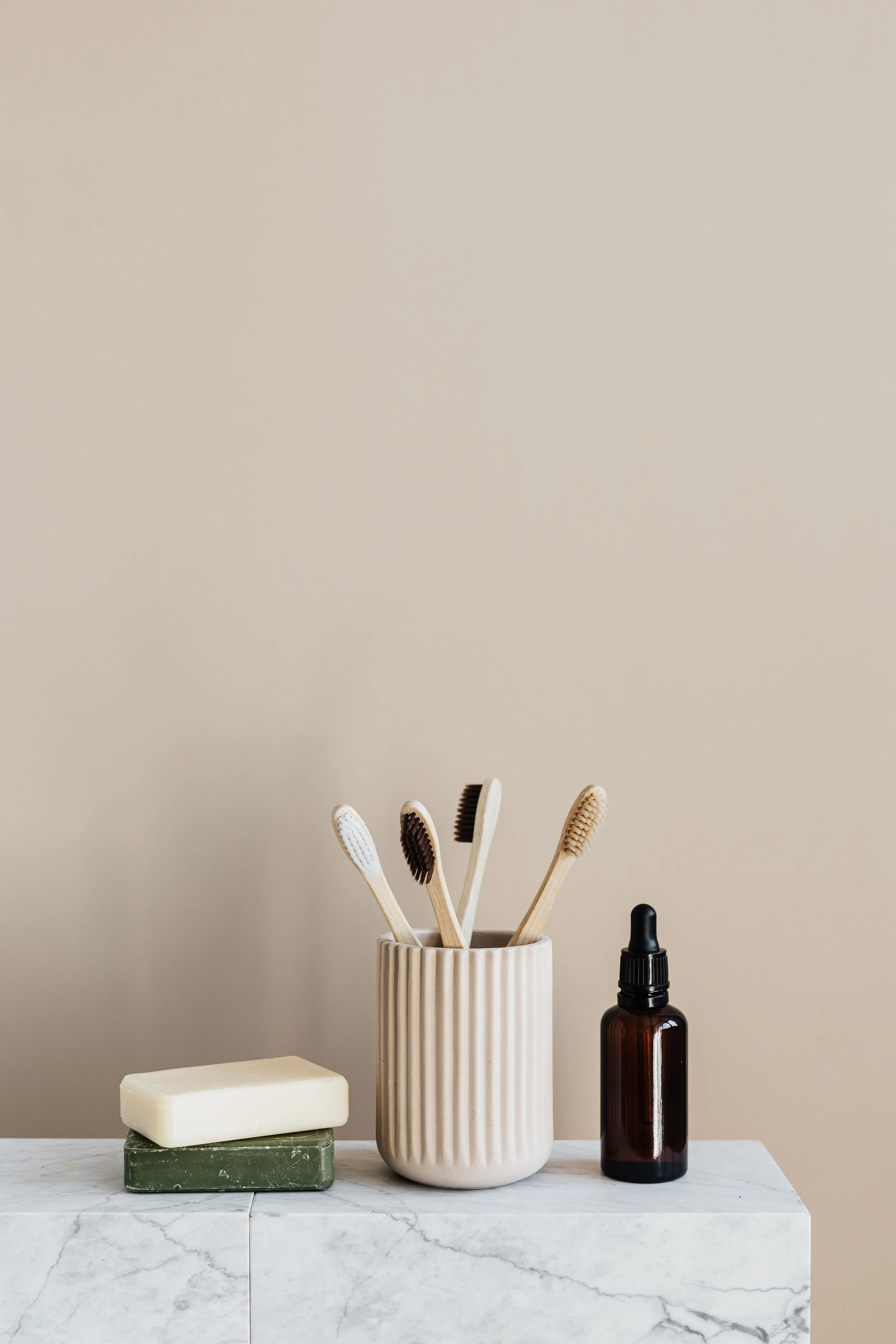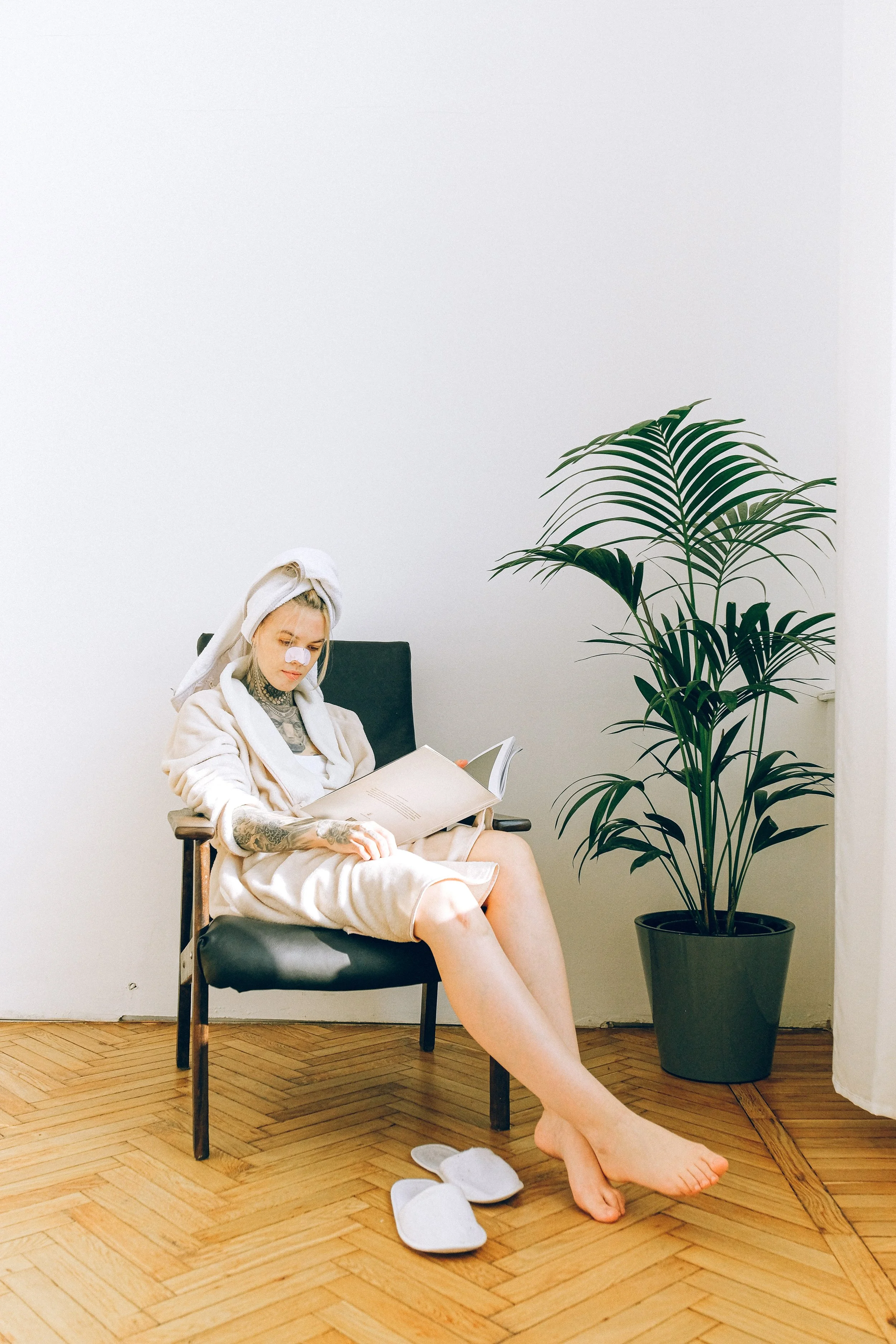How Clean is Clean Beauty?
5 minute read
As someone who lives and breathes sustainability on a daily basis, I try really hard to be environmentally conscious about the brands and products I choose to put my money towards. I simply love the idea that, with our wallets, we can vote for the type of world we want to live in. But it can be a bit of a minefield, here’s how I approach it…
Can’t stand the idea of unfair living wages? Don’t buy from that brand.
Animal testing is a no-no? Don’t buy from that brand.
No vegan options available? Don’t buy from that brand.
Really disagree with a business owner’s ethics? Don’t buy from that brand.
When it comes to my beauty regime, it’s no different. As a self-confessed beauty aficionado, I want to understand what my skincare is made of and I want to know that I am supporting a business that truly cares about its impact on our planet – from raw materials to packaging.
But how do we identify what good (for ourselves + planet!) looks like when it comes to beauty brands?
While natural beauty has been enjoying an unprecedented and truly welcomed boom, many of us are still left wondering when it comes to what exactly we should be buying, and indeed, what we should be avoiding.
And that is because in the past few decades, the promotion of “green” values and “green” products have become ubiquitous. It now seems that every single beauty brand has jumped on the bandwagon of preaching about their “values” and “beliefs”. Some of them have gigantic marketing budgets to try and convince us that their products and/or services are “green” in order to sell more. Simply Google ‘natural beauty products’ and your Google Shopping bar will be packed with brands using overfriendly words to sell their products…
Think “organic”, “detox”, “superfood” and even “miracle” – the latter probably being a step too far… no need to get the Gods involved in our skincare routine, am I right? They have plenty to deal with as is!
Jokes aside, this phenomenon is known as greenwashing.
When it comes to the beauty industry, greenwashing happens when a brand claims to be natural, eco-friendly, kind, gentle, organic, environmentally conscious, blah blah blah… – when they aren’t any of those things! – as a sales tactic.
Greenwashing is the biggest threat facing the clean beauty movement right now.
But why? Well, in the absence of a regulatory body or industry-wide standards, “clean beauty” has become the victim of this ambiguity caused by greenwashing. Please don’t get me wrong, there are fantastic brands out there doing phenomenal work! For instance, here in Ireland, we can find a wide range of small brands working to the highest standard of innovative skincare. Their products are usually made in small batches using 100% natural ingredients and minimal packaging. What’s not to love?
But sadly, brands like our local gems only account for a small percentage of the beauty market. Big corporations still have the upper hand and they are doing whatever makes more financial sense to them and calling the whole thing “clean”.
So, what’s ‘clean’ anyway?
Words used to promote “clean beauty” are not statutorily defined under any global regulations, so brands can use them to suit their marketing strategies – Sounds like a dodgy way of doing things? That’s because it is dodgy way of doing things. Some brands say not using silicones is clean, while others will claim that only naturals ingredients are clean. All of these conflicting claims and ideologies leave the world of “clean beauty” open to interpretation. Going forward, if you aren’t sure about the credibility of your favourite brand, just ask.
Social Media has enabled us to connect directly with brands so go for it and ask every single question that comes to your mind.
Ask brands to explain what ingredients X or Y mean.
Ask brands for their stability testing and cosmetic registration license.
Ask brands about what more they can offer besides making safe, clean products – making clean products should be a given, not a selling point for any brand!
Ask brands if they are certified by any specific regulatory bodies.
HOW TO READ the LABEL
The first thing to catch my eye when browsing beauty counters is aesthetic labelling. Hello, ultra-minimal, rose gold-embossed label, I want you!. As tempting as trendy packaging and clever buzzwords are, they don’t make a product “safe” or “clean”. If you’re like me, you’ve learned that it takes more than a catchy slogan and pop of pastel to warrant a purchase. However, reading long, bulky words that sound like something from the Stranger Things’ sci-fi lab is exhausting, right?
So, here are my 2c to help you navigate through this world of ‘clean beauty’…
Check for ingredients – Curious about the ingredients in your new serum? Ask the brand.. or else, check Chemical Maze App. The website Cruelty-Free Kitty is also a good source of information.
Check for allergens – You don’t want to get covered in pink spots (to say the least!) so always check for allergens on the back label.
Check the various symbols – Some symbols are official seals or logos that are given to a product (or a company) by an external certification organization such as the COSMOS organic certification. Other symbols are created by the brand to give an impression of a specific quality (read “Greenwashing”). If a product carries an official organic symbol, e.g. from the Soil Association, you know that the product meets certain standards required by the certification body. On the other hand, if a product has a made-up organic symbol, it might be just a marketing strategy or it might actually mean that the product is organic but the company didn’t go through organic certification (usually due to high costs).
MY APPROACH
My approach to true clean beauty revolves around a three-way impact system and a basic checklist.
The Three-Way impact System
I avoid products that contain plastic (like microbeads).
I avoid products that are packaged in plastic (and could ultimately end up in the ocean).
I choose products that aren’t harmful to the waterways as they’re washed off AKA packed with chemicals!
The Checklist
If after this rather long piece (soz, but there’s so much to cover!), you are now determined to live more sustainably, beauty regime included, this checklist is for you:
Use it up
By no means, throw everything you own away now! Like everything else in the sustainable world, the initial step towards switching to a more sustainable beauty routine is to use what you already have. You don’t need to go out and buy a whole new beauty range straightaway, if at all!
Dispose of it properly
Once you’ve reached the end of your beauty products, recycle or repurpose the packaging. You can wash out bigger cosmetic pots and use them as plant pots, make DIY candle holders or homemade organisers.
Do your research
As I said before, when it comes to creating your own beauty regime, you will need to put a little bit of work into understanding brands and products you are planning on bringing home with you... Look into skincare brands carefully so you can feel confident that they are truly sustainable and ethical.
Key areas of research to focus on include:
Sustainability Values: Check their website and social media channels. What drives them to do what they do?
Ethics: Are they concerned about skin health, the environment and ethical ingredient sourcing?
Marketing campaigns: What message do they use for their products? Is it convincing? Does it seem like greenwashing?
Accreditations: Are they accredited by any associations such as Soil Association, Leaping Bunny, NaTrue?
Animal Welfare: Are they certified cruelty free and vegan? Are the ingredients they use free from animal testing?
Transparency: Are they transparent about their ingredient sourcing and how they treat their workers?
Buy with a minimalist skincare routine in mind. Sustainable skincare is all about using a few good quality products that go a long way, so you don’t get overwhelmed or overbuy. This approach will do the planet, your skin and your pocket a huge favour!
Repeat step one! Resist the temptation to discard half used skincare products in favour of shiny new products unless they don’t work for you. Find a new home for those bits that won’t really work for you – think friends & family members!
A last little 'yay' from me for today... Companies will stop making what people stop buying, so your changes and those of others as they discover this new way of approaching brands too, will be a truly grassroots reshaping of the beauty product industry #THEPOWEROFONE, remember?
Ps: Those of you who've been into natural beauty for a while now, or any DIYers, please feel free to share recipes that you love and brands you trust with us.
FIVE IRISH WONDERS
Blossom Bask by Bodhi Blends
One of the most incredible face creams I’ve ever tried – and trust me, I’ve been around the block…
Nünaia Ground & Glow Ritual Set by Nünaia
This multi-tasking serum and a fantastic cleansing balm has been designed for all skin types, especially dull and aging skin. A must, if you ask me!
Scalp Remedy – Organic Shampoo by Organic Italian Hair
Perfect for dry, flaky scalp, this shampoo ensures gentle cleansing without damaging your hair and scalp.
Skin Shield SPF 50 PA+++ by Skingredients
I’ve been loving this product! An SPF that’ll protect your skin and lightly moisturise it, while imparting a dewy finish and a peachy tint. Plus it’s refillable! #winwin
Balmelicious Lemon & Lime | Organic Lip Balm by Voya
I simply cannot deal with chapped lips, they drive me nuts! This lip balm has been a great ally all winter plus its packaging is 100% recyclable.
Pat Kane, January 2022
What do you think? Tell us in the comments below…
join the conversation
share and comment below, we’d love to hear your thoughts…
















